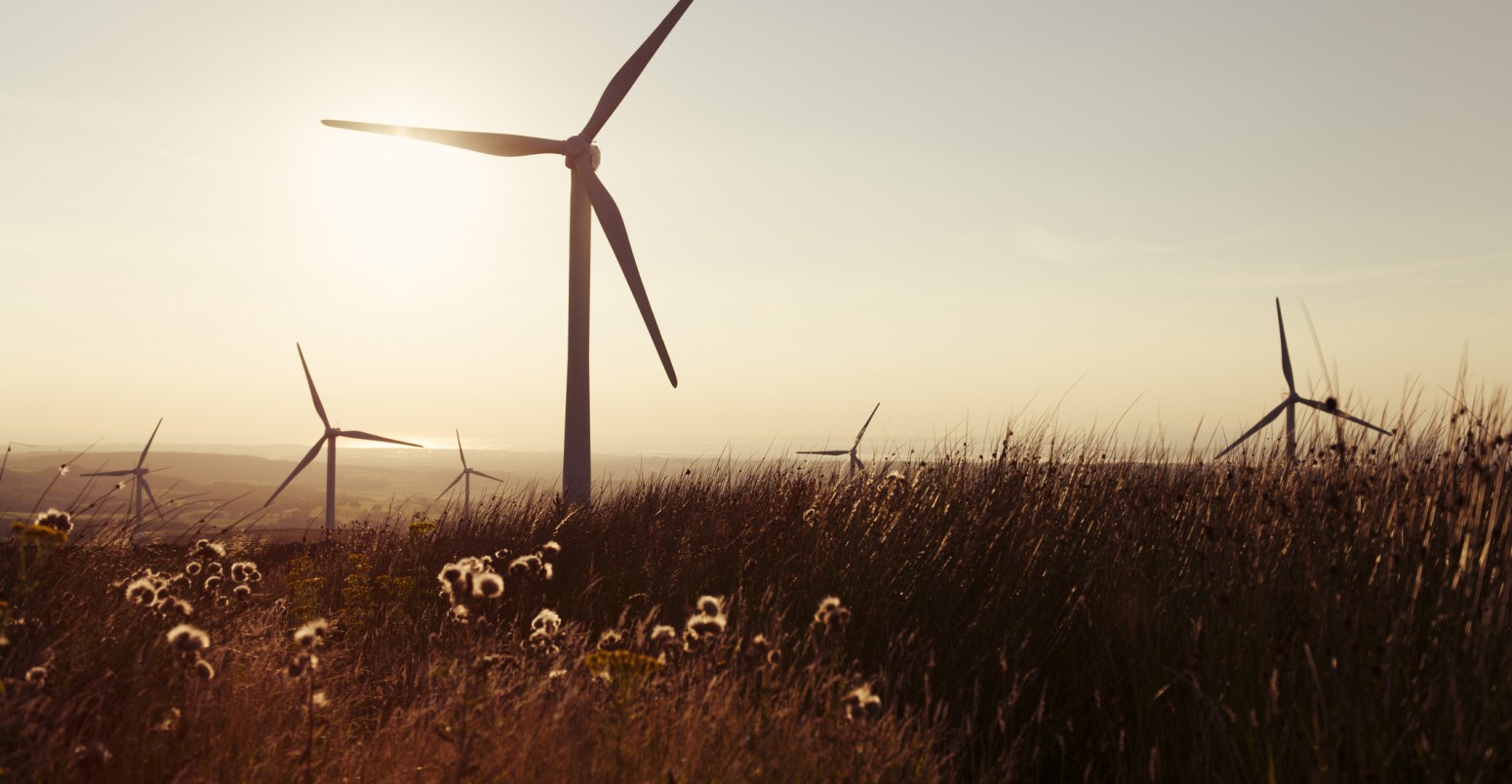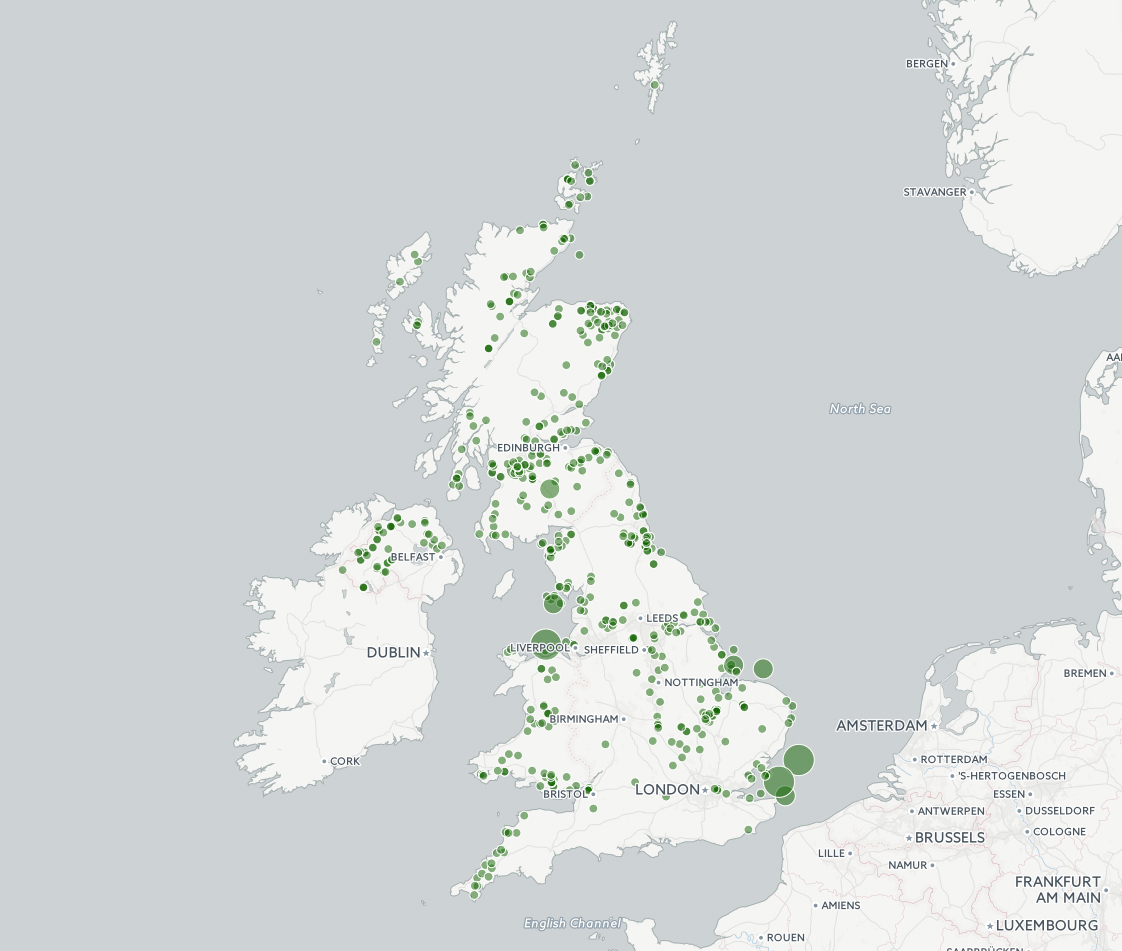
Factcheck: Which parts of the UK are windy enough for windfarms?
Simon Evans
06.06.16Simon Evans
06.06.2016 | 5:34pmOnshore windfarms offer the cheapest form of new electricity generation in the UK, says the chief executive of industry group RenewableUK, as long as they are at windy locations.
Those sites “almost certainly” won’t be in England, says Hugh McNeal in an interview with the Sunday Telegraph. McNeal joined RenewableUK two months ago, moving from the Department of Energy and Climate Change (DECC).
McNeal’s comments have attracted wide, negative coverage under headlines including “England Simply Isn’t Windy Enough For Wind Farms Admits Industry Chief” (Huffington Post). The Daily Mail, MailOnline, Express, Times and a Daily Mail editorial all take similar lines.
Carbon Brief explores the wider context behind McNeal’s comments.
Government axe
The UK renewable energy sector is still struggling to come to terms with the approach of the Conservative government. One of the party’s pre-election manifesto commitments was to end subsidies for onshore wind. Soon after winning power it set about delivering on this promise.
The government has also scaled back subsidies for a wide range of renewable technologies and signalled its wish for low-carbon energy to become subsidy-free as soon as possible. McNeal’s intervention seems to be an attempt to engage with this new reality.
In his interview with the Telegraph he says:
Instead, McNeal wants to focus on the positives. He tells the Sunday Telegraph:
Cheaper than gas
Last year, the Committee on Climate Change (CCC) said onshore wind would be cheaper than gas by 2020. Wind would be “subsidy free” compared to gas paying the full cost of its CO2 emissions.
McNeal goes one step further, arguing that onshore wind is already cheaper than gas. He is not the first to do so: last October Bloomberg New Energy Finance put the costs at £55 per megawatt hour for wind versus £74/MWh for gas.
(It’s worth noting that no new generating capacity can be built on the strength of wholesale electricity prices, currently running at little above £31/MWh. The government hopes to secure new gas via its capacity market, which provides payments for plants to be available during winter.)
Amber Rudd, the energy and climate secretary, gave credence to the idea that wind could compete with new gas when she said that onshore windfarms could be built in the UK “without subsidies”. The CCC and others have mooted the idea of “subsidy-free contracts for difference” as one way to pay for subsidy-free windfarms. You can read more about the idea in Carbon Brief’s earlier coverage.
Another potential positive for the renewable industry is that the cost of wind is falling, while the cost of electricity from new gas plant is uncertain and depends on future wholesale energy prices, as well as the price of CO2 emission permits.
Wind speed
Yet the apparently attractive economic case for new onshore wind set out by McNeal only stacks up for windier sites, he says. England is less windy than other parts of the UK, as you can see below.

Average wind speeds in the UK. Darker shades of blue show windier locations. Source: Met Office.
Developers have used this sort of information to choose the windiest and, therefore, the most economically attractive sites to build windfarms. Windier sites have higher load factors, a measure of the proportion of maximum site output generated across a year.
Existing windfarms in Scotland generate an average 27% of their maximum output each year, compared to 26% in England and Wales. For new build sites, Scottish load factors are expected to reach 33% versus only 30% in England and Wales.
Bottom line
While these differences in load factor might seem small, they can translate into large impacts on a windfarm’s bottom line. A 10% increase in load factor from 30% to 33% is equivalent to a 10% increase in income.
For example, a 25MW site might earn around £3.5m in a year if its load factor were 27%. This would rise to £3.9m at 30% and £4.3m for a 33% load factor. Another significant determinant of windfarm costs is the site size, because grid connection and access infrastructure can be shared among multiple wind turbines at larger sites.
Scottish windfarms, at an average of 23MW, are more than twice the size of the average 10MW English site. Scottish sites in the planning pipeline are even larger, at 40MW on average compared to 16MW in England.
Given these strong economic drivers it should be no surprise that McNeal expects cheaper-than-gas windfarms to be built in Scotland rather than England. It is also unsurprising that existing wind sites shows a high degree of overlap with the Met Office map of windy locations.

Onshore and offshore windfarms in the UK. The size of the bubble relates to the installed generating capacity in megawatts. There is a minimum bubble size for smaller sites. You can explore an interactive version of the map. Source: Carbon Brief.
Onshore wind capacity around the UK
Another way of looking at the data is to add up the capacity of windfarms in the countries that make up the UK. Of the 8.9 gigawatts (GW) of onshore wind currently in operation, two-thirds is in Scotland (5.4GW) compared to around a quarter in England (2.3GW).
Onshore wind capacity in the UK in operation, under construction, granted planning permission and awaiting a planning decision (MW). Source: DECC renewable energy planning database. Chart by Carbon Brief using Highcharts.There is an even larger disparity when it comes to the windfarms not yet built. Scotland accounts for around 70% of the project pipeline, compared to less than 10% for England.
Carbon Brief analysis of DECC data shows there are only 20 English windfarms in the planning system awaiting a decision, containing 125 turbines with a total capacity of 320MW (less than 6% of the UK planning pipeline). Of these 20 English schemes, only three planning applications were submitted after the Conservative election victory in May 2015.
This suggests developers are already reacting to government policy, including the new, tighter planning restrictions for windfarms in England. This is despite the fact that some sites in England are clearly relatively windy, as the Met Office map shows.
Conclusion
The renewables industry wants to persuade the government, and the wider British public, that it offers the very cheapest form of new electricity generation. In his first major interview at the helm of RenewableUK, McNeal has tried to use what you might call the JFK gambit, telling his industry: “Ask not what your country can do for you. Ask what you can do for your country.”
He says that the best and windiest sites can generate power even more cheaply than gas, a fuel often cited as a cheaper alternative. Unfortunately for McNeal, this potentially significant story is in danger of being lost in favour of headline-grabbing “admissions” that England is less windy than Scotland.

